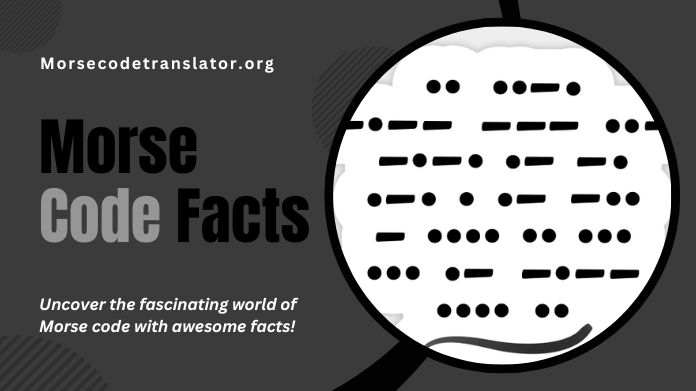Morse Code has woven itself into the tapestry of communication history with its intricate system of dots and dashes. Beyond its origins in telegraphy, this fascinating code carries a rich legacy and boasts a myriad of uses.
Exploring “Awesome Morse Code Facts You Should Know,” we delve into the captivating world of signals and symbolism. From its role in maritime communication to its enduring presence in modern technology, Morse Code continues to intrigue and inspire.
Join us on a journey through the dots and dashes as we uncover surprising Morse Code facts that illuminate the significance and enduring allure of Morse Code in the ever-evolving landscape of communication.
What is Morse Code?
Morse Code is a communication system representing letters, numbers, and symbols with a succession of dots and dashes. Samuel Morse and Alfred Vail created it in the 1830s and 1840s for use with the telegraph.
Every letter, number, and symbol represents a different set of short and long signals; dashes stand for long signals and dots for temporary signals.
Before the invention of the telephone, the Morse Code was frequently used for long-distance communication. It is still utilized in specific contexts today, such as amateur radio and aviation.
Applications of Morse Code
Morse Code, initially developed for telegraphy, has found applications across various domains. Here are some notable uses of Morse Code:
1. Maritime Communication: Morse Code has historical significance in maritime communication, where it was extensively used for ship-to-ship and ship-to-shore signaling, especially in distress situations.
2. Aviation Communication: Pilots use Morse Code in radio communication, particularly for navigation aids and identification of radio beacons.
3. Military Communication: Morse Code played a crucial role in military communication on the battlefield and coded messages. Soldiers were trained to use Morse Code for covert communication.
4. Amateur Radio (Ham Radio): Morse Code proficiency is a requirement for obtaining an amateur radio license. Many ham radio operators continue to use Morse Code for communication.
5. Emergency Signaling: Morse Code is utilized in emergency signaling using lights, such as flashlights or lamps, to convey distress signals.
6. Wireless Telegraphy: Morse Code was widely used in early wireless telegraphy systems, enabling long-distance communication through telegraph wires and later radio waves.
7. Navigation and Beacons: Morse Code identifiers are used in navigation aids, such as lighthouses and buoys, to assist ships and pilots in determining their locations.
8. Space Exploration: NASA used Morse Code in early space missions for communication with spacecraft and ground control. It has also been used in signals sent to and from deep space probes.
Some Awesome Morse Code Facts

1. Samuel Morse and Alfred Vail developed the Morse code in the 1830s.
2. Morse code uses a combination of dots and dashes to represent letters and numbers.
3. The most famous Morse code message is the distress signal “SOS,” which stands for “Save Our Souls.”
4. Morse code was widely used for communication during the telegraph era, especially in the maritime industry.
5. Morse code is still used today, primarily by amateur radio operators and in some military applications.
6. Morse code can be transmitted using sound, light signals, or touch.
7. Morse code is a highly efficient means of communication, as it only uses two symbols.
8. Learning Morse code was once a requirement for radio operators, but it is no longer mandatory.
9. Morse code has its unique rhythm and cadence, making it recognizable even to those who do not understand it.
10. Morse code was one of the first global communication systems, connecting people across continents and oceans.
Conclusion
In wrapping up our exploration of “Awesome Morse Code Facts You Should Know,” it’s clear that Morse Code is more than just dots and dashes. It’s a timeless language with a rich history, from guiding ships at sea to challenging us in escape rooms.
Morse Code’s adaptability has kept it relevant over the years, proving that even in our high-tech world, those simple signals still have much to say.
So, whether you’re into history, puzzles, or just fascinated by cool facts, Morse Code is a hidden gem that continues to leave its mark in surprising ways.
